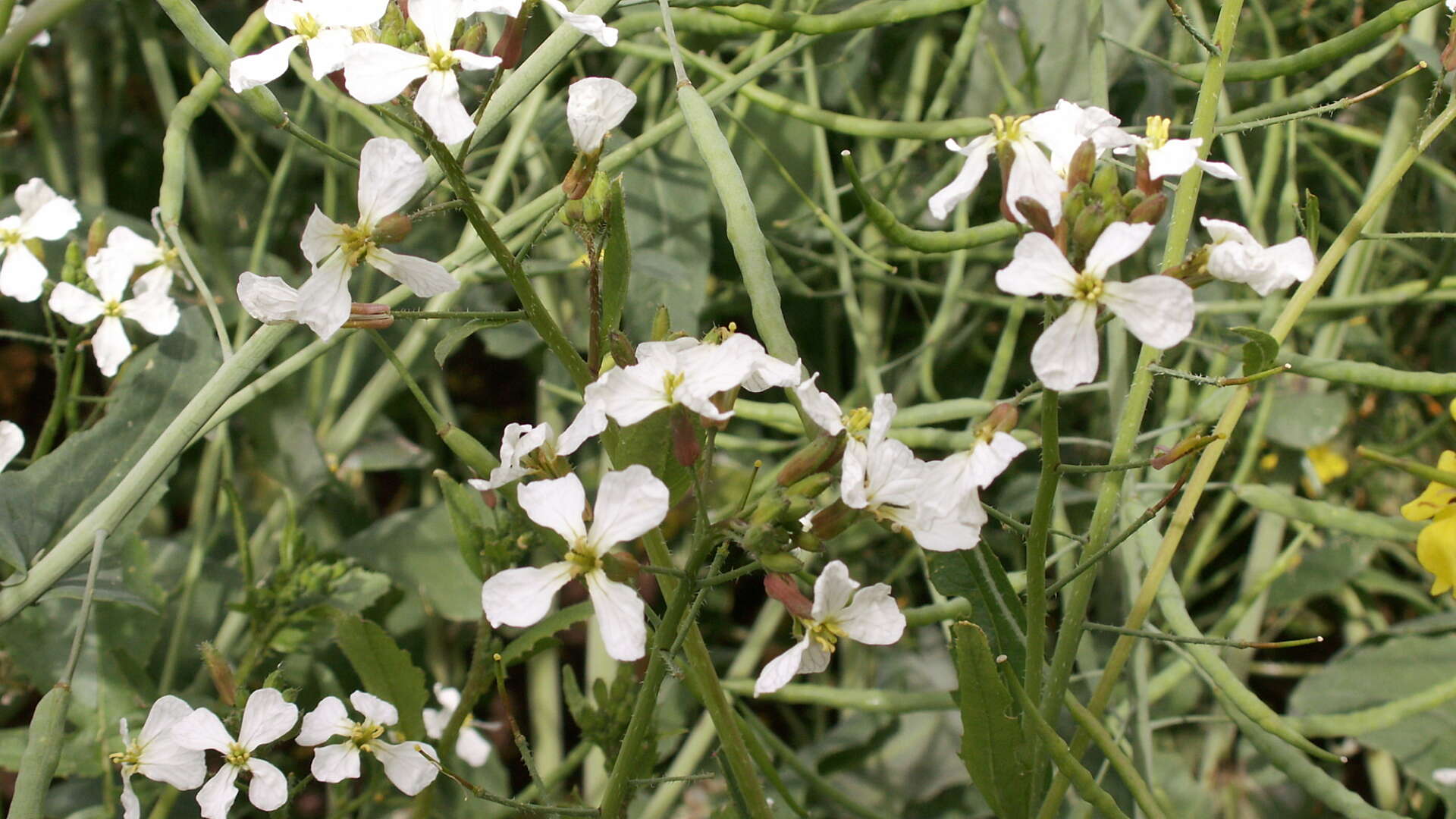Wild radish

Other names
Jointed charlock, runch, white charlock, white weed
Latin names
Raphanus raphanistrum L.
Weed Type
Annual Broad-leaved Weeds
Occurrence
Wild radish is an annual or biennial weed that occurs on cultivated and rough ground, waste places and tips. It is a troublesome weed, especially of non-calcareous soils. Wild radish is doubtfully native but has been present in Britain since prehistoric times. It is common throughout the UK. Wild radish prefers a nutrient rich, lime-free, sandy or loamy soil.
Wild radish is a variable species. Yellow and white flowered forms are found and others have white petals with violet veining. The different flower colour forms often occur in a single population. Plants also vary in seedpod size and shape. The wild radish can hybridise with the cultivated radish, R. sativus. It also has the potential to form an interspecific hybrid with oilseed rape.
It is believed that wild radish is harmful to stock if eaten in sufficient quantities but there are no recent records of poisoning. The seeds are dangerous if eaten. Wild radish seeds and seedpods release a toxic vapour during storage that reduces the viability of other seeds in close proximity.
Biology
Wild radish flowers from May to October. Seed set is often variable due to self-incompatibility and erratic pollination. Seeds within a pod may be the result of pollination by different parent plants so genetic differences may be present even in a single pod. Each pod contains from 1 to 10 seeds. The seedpods are indehiscent and break up into segments containing a single seed. Seed numbers per plant range from 160 to 1,875 but the numbers are lower for wild radish plants growing in a crop.
Freshly shed seed has a low level of germination. The germination of seeds in intact pods is less than that of isolated seeds. The outer pod tissue inhibits germination both mechanically and biochemically. Leaching the seeds with water increases germination. Seeds of the white and purple flowered forms are more dormant than the yellow forms. Light has little effect on germination. Cultivation that leads to shallow burial in moist soil stimulates germination. Seedling emergence occurs from March to October with the main flush in March-May and a smaller one in August.
In a sandy loam soil, field seedlings emerged from the top 80 mm of soil. The majority emerged from the surface 20 mm of soil but there was a reasonable spread of seedlings from the upper 50 mm.
Persistence and Spread
Seed numbers in soil decline with time but the loss is slower at 100 mm depth than at 10 mm. After 2 years, viability at 100 mm was 53% and at 10 mm it was 16%. Cultivation enhances seedling emergence and reduces seedbank numbers. Under a grass sward, wild radish seed had a mean annual decline rate of 33% and a half-life of 2 years.
The seeds may be carried in soil on footwear and machinery. Wild radish seed has occurred as an impurity in cereal seed, particularly home saved seed. Seed has been found in cattle droppings and manure, and seedlings have been raised from the droppings of various birds.
Management
Control is by the mechanical destruction of seedlings to prevent further seeding, and by avoiding the introduction of seed in contaminated crop seed. Stubble cleaning is an effective way of dealing with freshly shed wild radish seeds. Soil should be cultivated to 50 mm depth at 14-day intervals. Deep cultivations may reduce seedling emergence initially but seed persistence will be prolonged. Fallowing is generally unsuccessful because wild radish seeds have different levels of dormancy.
Wild radish has a long taproot that aids drought resistance and provides adequate reserves for regrowth if the plant is cut down or grazed off. Grazing is not recommended as a control measure because of the harm wild radish may cause to stock.
Wild radish seed is susceptible to soil solarization. Small seedlings are susceptible to flame weeding but larger plants are not.
Wild radish seedlings are attacked by flea beetles and can suffer the same severe damage that occurs in cultivated brassicas.